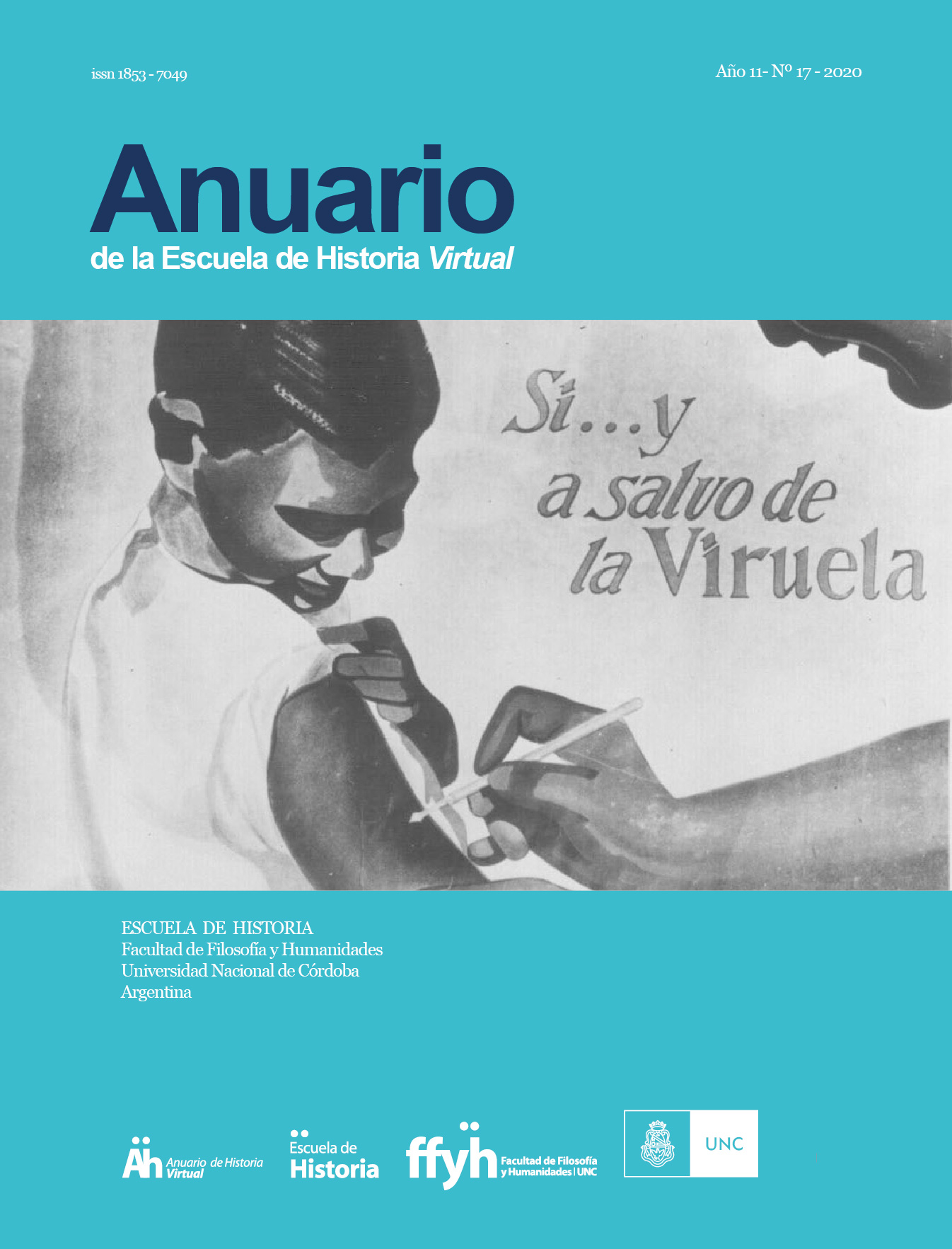A Leper Man is not the Same as a Leper Woman. Marriage Debit and Medical Discourse in the Late Middle Ages
Main Article Content
Abstract
This paper analyzes the sex-differentiated treatment in regard to marriage debit in Alfonso the Wise’s Partidas according to its commentary written in 1555 by Gregorio López. In this gloss, medical references are involved that pose different risks of contagion for the healthy spouse of a leper man or of a leper woman. This medical discourse is mobilized within the framework of some theological references that ensure the sustaining of a socially sanctioned order of precedence through the corresponding disparity of treatment. The prescriptive isolation of lepers in the Middle Ages raised a set of legal issues to be resolved. Among them, it was necessary to establish under which conditions the marriage debit should be made effective. Gregorio López’s gloss refers us to a thesis of Peter Paludanus that posed this sex-differentiated treatment according to statements coming from the medicine of the time. In this paper, López’s legal and theological references are crossed with the postulates of late medieval and early modern gynecology.
Article Details

This work is licensed under a Creative Commons Attribution-NonCommercial-NoDerivatives 4.0 International License.
Bajo los siguientes términos:
Atribución - Usted debe dar el crédito apropiado, proporcionar un enlace a la licencia e indicar si se hicieron cambios. Usted puede hacerlo de cualquier manera razonable, pero no de ninguna manera que sugiera que el licenciante lo respalda a usted o a su uso.
No comercial - Usted no puede utilizar el material con fines comerciales.
NoDerivados - Si remezclas, transformas o construyes sobre el material, no puedes distribuir el material modificado.
References
Beriac, F. (1988). Histoire des lépreux au Moyen Âge. Une société d'exclus. París: Imago.
Beriou, N. (1991). Les lépreux sous le regard des prédicateurs d’après les collections de sermons ad status du XIIIe siècle. En F. Touati y N. Bériou (Eds.), Voluntate dei leprosus. Les lépreux entre conversion et exclusion au XIIe et XIIIe siècles (pp. 33-80). Spoleto: Centro Italiano di Studi sull’ Alto Medioevo.
Brundage, J. (2000). La ley, el sexo y la sociedad cristiana en la Europa medieval. México: Fondo de Cultura Económica.
Cadden, J. (1995). Meaning of sex difference in the Middle Ages. Cambridge: Cambridge University Press.
Demaitre, L. (2007). Leprosy in Premodern Medicine: a Malady of the Whole Body. Baltimore: The Johns Hopkins University Press.
Diekstra, F. N. M. (1999). Robert de Sorbon’s ‘Cum Repetes’. Recherches de Théologie et Philosophie Médiévales, 66 (1), 79-154.
Gaudemet, J. (1993). El matrimonio en Occidente. Madrid: Taurus.
Hespanha, A. M. (1990). Una historia de textos. En F. Tomás y Valiente et al. Sexo barroco y otras transgresiones premodernas (pp. 187-196). Madrid: Alianza Editorial.
Jacquart, D. y Thomasset, C. (1989). Sexualidad y saber médico en la Edad Media. Barcelona: Editorial Labor.
Landau, P. (1989). Die Leprakranken im mittelalterlichen kanonischen Recht. En D. Schwab (Ed.), Staat, Kirche, Wissenschaft in einer pluralistischen Gesellschaft: Festschrift zum 65. Geburtstag von Paul Mikat (pp. 169-177). Berlín: Duncker & Humblot.
Madero, M. (2015). La loi de la chair. Le droit au corps du conjoint dans l'œuvre des canonistes (XIIe-XVe siècles). París: Publications de la Sorbonne.
Moore, R. (1976). “Heresy as Disease”, The Concept of Heresy in the Middle Ages. En W. Lourdaux y D. Verhelst (Eds.), The Concept of Heresy in the Middle Ages (pp. 1-12). Lovaina: Leuven University Press.
Moore, R. (1989). La formación de una sociedad represora. Poder y Disidencia en la Europa Occidental, 950-1250. Barcelona: Crítica.
Morin, A. (2009). Pecado y delito en la Edad Media. Estudio de una relación a partir de la obra jurídica de Alfonso el Sabio. Córdoba: Ordia Prima.
Morin, A. (2019). Lepra, muerte civil y exclusión de la comunidad en la Edad Media. Revista Chilena de Estudios Medievales, 15, 8-15.
Orlando, E. (2013). Et lepra superveniens non dissolvit matrimonium. Malattia contagiosa e separazione (da alcuni casi veneziani del XV secolo). En G. de S. Gasparini (Ed.) Malsani. Lebbra e lebbrosi nel medieovo (pp. 251-260). Verona: Cierre Edizioni.
Ortuño Sánchez-Pedreño, J. M. (1992). Tratamiento jurídico de la enfermedad en las Partidas. Glossae. European Journal of Legal History, 3, 135-164.
Pichon, G. (1988). La lèpre et le péché. Nouvelle Revue de Psychanalyse, 38, 147-157.
Sampaio da Nóvoa, R. (2009). Los leprosos en el Portugal de los siglos XIV y XV: contribución para una «historia de los asistidos». Miscelánea Medieval Murciana, 33, 175-184.
Testuzza, M. S. (2012). De coniugio leprosorum: antiche questioni di bio-diritto. Forum Historiae Iuris. Recuperado de http://www.forhistiur.de/2012-11-testuzza/. Fecha de descarga: 20/06/2019.
Touati, F. O. (1991). Maladie et Société au Moyen Age. La lèpre, les lèpreux et les léproseries dans la province ecclésiastique de Sens jusqu’au milieu du XIVe siècle. París-Bruselas: De Boeck Université.
